#australian mythology
Text
Australian Pokemon - single stages
Another set of Fakemon for my Goorda region, based on a combination of Australia and Aotearoa/New Zealand. Previous posts: non-natives, regional standards, creepy lines, regional variants, birds, early-game standards, misc 2, misc 1, variant starters, starters
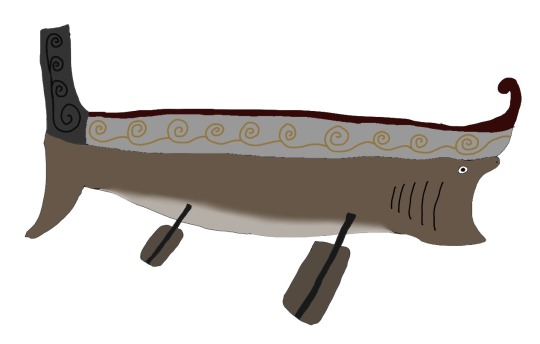
Wakaremai, the Transport Pokemon, water/dragon type. They have been used since ancient times as transportation, carrying humans between islands with the canoes growing from their backs. Some scientists believe ancient Goordan people created the species, but are not sure how. SOme legends say that people were first brought to Goorda on the back of a gigantic Wakaremai. While massive, Wakaremai are gentle giants who feed exclusively on plankton and are easily tamed by humans. Since the invention of motorboats, Wakaremai have become more common in the wild.
Wakaremai is a combination basking shark and waka, Maori canoes. I based the design on this reconstruction waka. It fills the same niche as Lapras in being a transport focused water type and Lapras are either not native to Goorda or where never used for transport. Real life basking sharks are plankton-eating gentle giants just like Wakaremai. The story of Wakaremai bringing people to Goorda is based on Maori stories of how they first came to Aotearoa on canoes. I did make two boat sharks in the same region, but Wakaremai is a gentle giant and defensively oriented while Davalossam (in a previous post) is very hostile and offensively oriented. Wakaremai's name comes from "waka" and "reremai", the Maori word for basking shark.
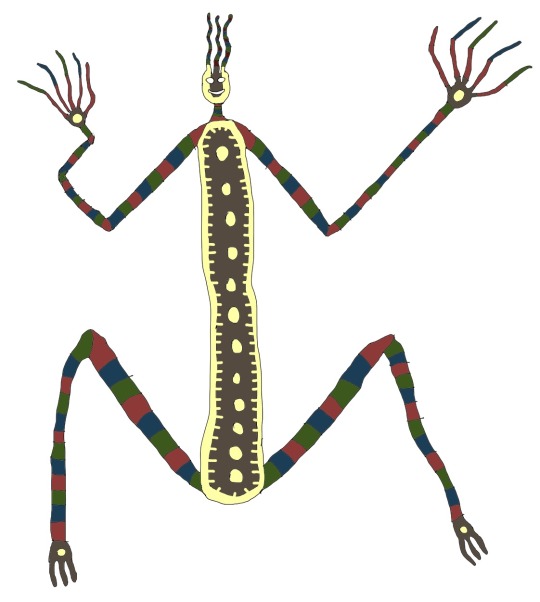
Mimicrag, the Thin Pokemon, fairy/rock type. Their bodies are paper-thin, making them incredibly flexible, but they are so light that the wind will blow them away. They live inside cracks in rocks and only emerge on windless days. Mimicrag are intelligent and mischievous Pokemon that have been known to prank hikers, but they seem to mean no harm. Legends say that the Mimicrag taught the first humans in Goorda how to survive in their new homes.
Mimicrag is based on the mimi, mythical creatures from north Australia who had to live in cracks in rocks because their bodies were so thin wind could kill them. They were believed to have inhabited Australia before humanity and taught humans how to hunt and make rock art. Depictions of the mimi are found in a lot of petroglyphs, which inspired the rock typing. Mimicrag would be a very fast and lightweight, but defensively poor Pokemon, the opposite of most rock types. The name comes from "mimi" and "crag".
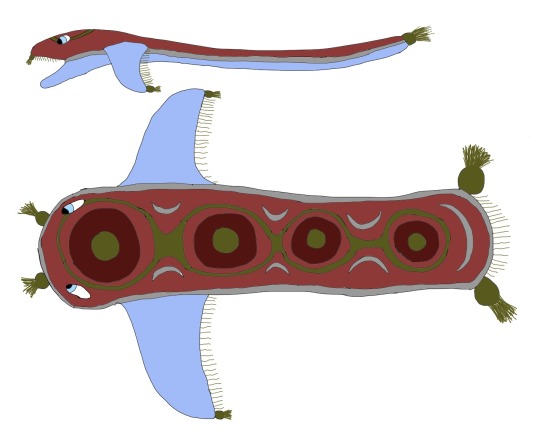
Windipet, the Carpet Shark Pokemon, flying type. These airborne Pokemon normally dwell high in the sky and eat clouds, but they occasionally come low enough to encounter humans. They are strong enough to carry a human, but need training as their normal flying style would quickly send the rider falling. Windipet are know to be playful and will spend hours playing with each other when they meet.
Windipet is a flying carpet that is a carpet shark. Specifically, it's a tasseled wobbegong and a tasseled carpet. Them living in the atmosphere and rarely coming down is a reference to atmospheric beasts, cryptids that allegedly live their entire lives in the sky. Windipet comes from "windy" and "carpet" and I tried to mimic the word wobbegong.
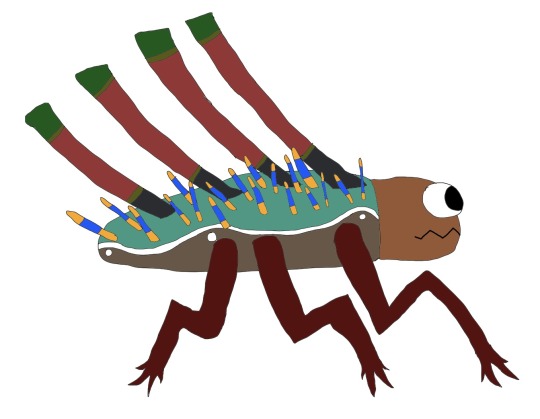
Didgeridoodlebug, the Noisy Pokemon, bug/normal type. It has eight horn-like organs on its back that it can move air through to create a very loud noise. Smaller, stick-like organs coating its back are banged together to make more noises. During mating season, Didgeridoodlebug create cacophonous symphonies to attract mates, much to the dismay of any nearby humans trying to sleep.
Didgeridoodlebug is based on two Australian musical instruments and Thopha saccata, a species of Australian cicada that is a contender for the loudest insect in the world. Much like real cicadas, their songs can be very frustrating for humans. The musical instruments are the didgeridoo and clapsticks, both of which are used by Aboriginal peoples. I made it part normal type both because we don't have a bug/normal yet and to give it STAB on moves like hyper voice and uproar. Its name comes from "didgeridoo" and "doodlebug". Cicadas aren't doodlebugs, but I just couldn't pass up on that pun.
#pokemon#original pokemon#fakemon#australia#new zealand#aotearoa#original pokemon region#maori canoe#waka#canoe#basking shark#mimi#australian mythology#petroglyphs#carpet shark#wobbegong#flying carpet#cicada#didgeridoo#clapsticks#pun
67 notes
·
View notes
Text

Some say that the Whowie was ultimately killed by the tribes after it had been forced out in its weakened state. Others believe that it managed to drag itself back into its cave where its weak breath can continue to be heard as it continues to approach its eventual death.
#BriefBestiary#bestiary#digital art#fantasy#folklore#legend#myth#mythology#monster#whowie#whowhie#australian folklore#australian legend#australian mythology#riverina#murray river#legendary reptile
36 notes
·
View notes
Text
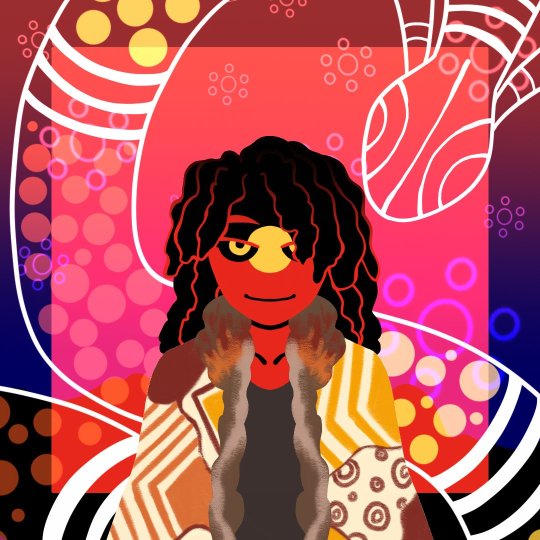
Dreamtime
#kingok art#countryhumans#ch#aboriginal#countryhumans aboriginal#australian mythology#aboriginal mythology#dream time#rainbow serpent
16 notes
·
View notes
Text
Jackson's Daily Bestiary #12: Mimi
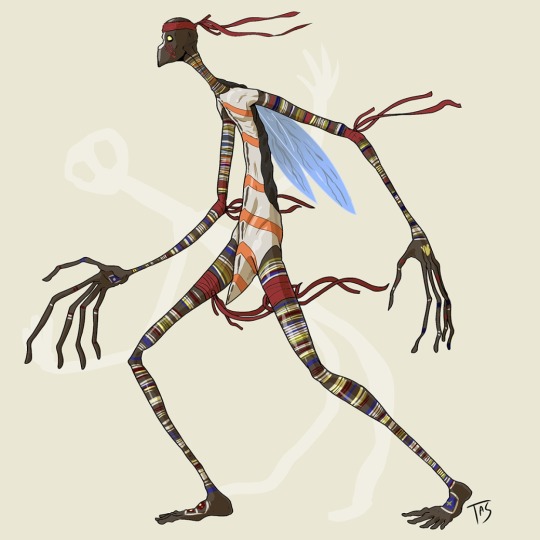
Image credit: https://arcanebeastsandcritters.wordpress.com/2018/05/06/mimi/
Region of Origin: Australia
Mimi (or Mimih) are fairy-like beings from the mythologies of various aboriginal groups of Arnhem Land, Australia. They have extremely thin and elongated bodies, which are at risk of breaking from even the slightest of winds. Because of this, they usually stay inside rock crevices, only coming out on windless days to fish and hunt.
The Mimi are ancestral beings who lived in Australia during the Dreamtime, a mythical period told of in the legends of many, many aboriginal tribes and peoples across Australia. They taught the aborigines many survival skills, such as how to hunt and cook kangaroo meat and, by extension, how to use fire, as well as creative skills, such as painting, through which the aborigines preserve their ancestors' noble deeds.
While they are mostly friendly, Mimi can be mischievous and dangerous to those who disturb them, and they are weary of strangers. The Mimi keep pets, which includes animals such as kangaroos, echidnas, crocodiles and many others. They will become extremely upset if one of their pets is harmed, bringing illness, kidnapping or even killing those who harm their pets. Nonetheless, they are peaceful creatures with a society of their own who promote harmony between Man and Nature.
Sources:
-https://en.m.wikipedia.org/wiki/Mimi_(folklore
-https://www.ancientpages.com/2020/03/26/immortal-mimi-spirits-in-beliefs-of-aborigines-of-arnhem-land
-https://www.aboriginal-art-australia.com/aboriginal-art-library/mimi-spirits/
-https://artmob.com.au/exhibition/mimih-spirits/
#jackson's daily bestiary#mythology#folklore#australia#aboriginal#aboriginal mythology#Australian mythology#Mimi#arnhem land
8 notes
·
View notes
Text
this, right here, is my favorite thing.
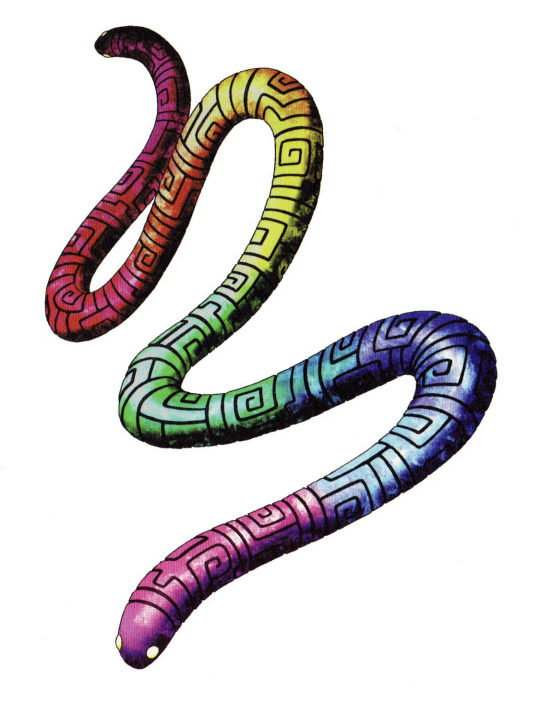
ever.
7 notes
·
View notes
Text
(hey mythology enthusiasts!)
(I was wondering if we can do a 12 days of Myth-mas?)
(we pulled together what kind of different myths from all around the world would better coincide with the 12 Days of Christmas song and we put into one long post?)
(If you want to you are more than welcome to contact me?)
#greek mythology#hellenistic#greek gods#hindu culture#norse mythology#mesoamerican mythology#eygptian mythology#native american mythology#african mythology#chinese mythology#japanese mythology#russian mythology#australian mythology#mythology
2 notes
·
View notes
Text

0 notes
Text
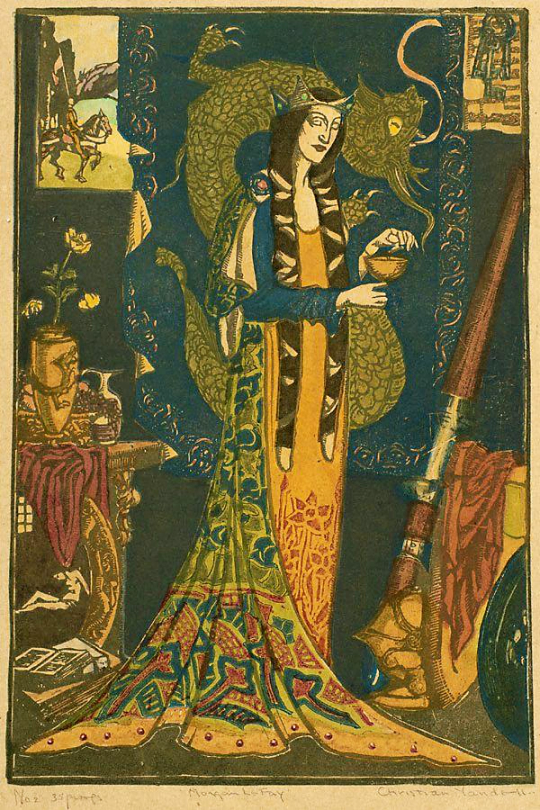
Christian Waller - Morgan Le Fay (ca. 1927)
2K notes
·
View notes
Text
Review: A Mage’s Guide to Aussie Terrors (R’iyah Family Archives: Volume 2) by A. J. Sherwood
Review: A Mage’s Guide to Aussie Terrors (R’iyah Family Archives: Volume 2) by A. J. Sherwood
Rating: 5 🌈
It’s been waaay too long since the first time I met this zany, fabulous found family of MAD monster hunters. A Mage’s Guide to Human Familiars was the beginning of the R’iyah Family Archive series. It introduces us to Bel Adams, a red-eyed R’iyah mage who’s part demon, in need of a new familiar because of a traumatically bad first bonding.
He gets a fabulous BOGO in the forms of new…

View On WordPress
#newbookreleases#A MelanieM Review#Australian mythology#author A. J. Sherwood#demons#humor#LGBTGIA fantasy adventure#LGBTGIA fantasy romance#m/m/m#Review: A Mage’s Guide to Aussie Terrors (Ri’yah Family Archives: Volume 2) by A. J. Sherwood#Scattered Thoughts Highly Recommended
0 notes
Text
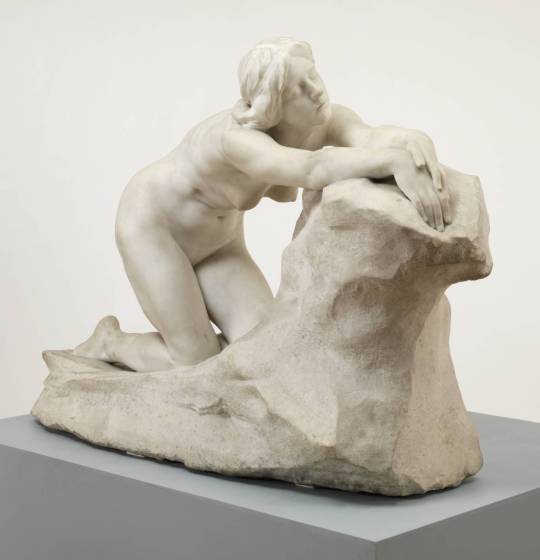
Harold Parker (1873-1962)
"Ariadne" (1908)
Marble
Located in the Tate Britain, London, England
#sculptures#art#artwork#mythological sculpture#female figure#harold parker#marble statue#fine art#tate gallery#museum#art gallery#australian artist#portrait of a woman#greek mythology#despair#anguish#distress#distressed#early 1900s#early 20th century
549 notes
·
View notes
Text

Khadim Ali — Birth of Demons V (gouache & gold leaf, on handmade paper, 2024)
60 notes
·
View notes
Text
Australian fakemon: regional variants
Another post in my series of fakemon for the Goorda region based on Australia and Aotearoa/New Zealand (but mostly the former). This time I'm showcasing three regional variant lines. Previous posts: birds, early game standards, misc, misc, starter variants, starters.
First off is Goordan Tangela, the Seaweed Pokemon, grass/water type. The Tangela in Goorda moved into the water and replaced their vines with seaweed. They are predators that use their feet to cling to rocks at the bottom of rivers and extend several strands of seaweed upward. Anything that touches the seaweed will be wrapped up and dragged down. Children in the Goorda region are warned to avoid patches of seaweed while swimming.

Goordan Tangela evolves to Muldrowk, the Seaweed Pokemon, grass/water type. Now capable of swimming and having adapted its feet into hands, Muldrowk has become the apex predator of Goorda's rivers, enough to even force Sarviyip (see starter variants post) out of their territory. Boaters in Goorda are taught to avoid seaweed patches as a Muldrowk can easily drag a small boat to its doom. Nobody knows what is beneath its seaweed pelt, but anything pulled in is never seen again.

Goordan Tangela and (especially) Muldrowk are based on two mythical creatures of Australian aboriginal folklore: the muldjewangk of the Ngarrindjeri people and the yawkyawk of the Kunwinjku people. These are creatures said to lurk in the river and are sometimes described as mermaids or mermen with seaweed for hair. The muldjewangk is viewed as a more malevolent creature that attacks boats and lure children into the water while the yawkyawk has various magical powers and can be benevolent or malevolent depending on its mood. Muldrowk has a mermaid-like shape and both members of the line are seaweed-covered dangerous creatures that live in the river. Muldrowk's name combines "muldjewangk", "yawkyawk", and "drown".
Next is Goordan Ekans, the Snake Pokemon, ice/poison type. The Ekans in Goorda live high in the mountains where they had to adapt to the cold conditions. In order to move between peaks and over crags, they coil their bodies up and bounce like springs. They are actually faster when bouncing then slithering. The venom of a Goordan Ekans inflicts frostbite.
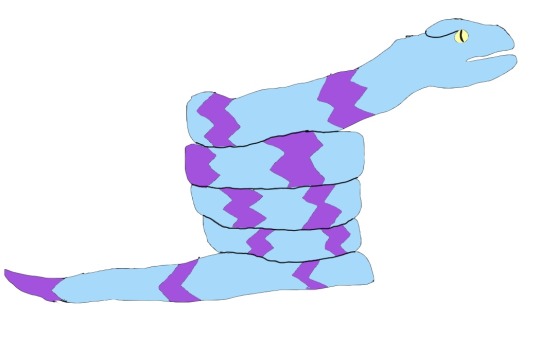
Goordan Ekans evolves to Soroboruo, the Snake Pokemon, ice/poison type. Soroboruo chases prey in the mountains by biting its tail and rolling downhill like a wheel at extremely high speeds. Sometimes they roll all the way down into the lowlands and have to make their way back up the mountain. The scales on its back have grown extremely thick for protection when rolling, which also increases their defense. A Soroboruo biting its tail has been used as a symbol of cycles or infinity.

Goordan Ekans and Soroboruo are based on taipans, venomous snakes found in Australia and New Guinea. The zig-zag patterns on them come from patters found on some species of taipan. Soroboruo is based on the hoop snake, a folklore creature first invented in North America, but which has spread to other places, Australia included. hoop snakes are snakes that bite their tails and roll around like wheels to chase prey. The symbol of a snake biting its tail is called an ouroboros and is used to symbolize cycles, infinity, and some other stuff. In keeping with the Ekans line's naming scheme, Soroboruo is "ouroboros" spelled backwards.
The last line for today starts with Goordan Carvanha, the Sand Fish Pokemon, steel/ground type. Millions of years ago, the desert of Goorda was covered with a shallow sea. When the land rose and the water receded, the local Carvanha adapted to swim through sand and soil like water and became powerful desert predators that attack from below in swarms. They incorporate iron from the sand into their teeth and fins to better move through the sand and attack prey.
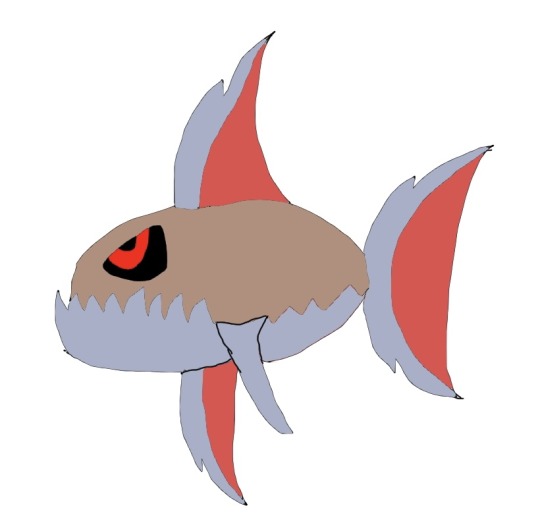
Goordan Carvanha evolves to Goordan Sharpedo. Its snout has adapted into a giant drill that lets it rocket through the earth at incredibly high speeds. It is a powerful lone predator that will attack anything that crosses the desert and can sense vibrations from far away. Pokemon attacked by Goordan Carvanha can hide on rocks for safety, but Sharpedo's drill can crush through rocks with ease. Short of flying, there is no escape from a hunting Sharpedo.
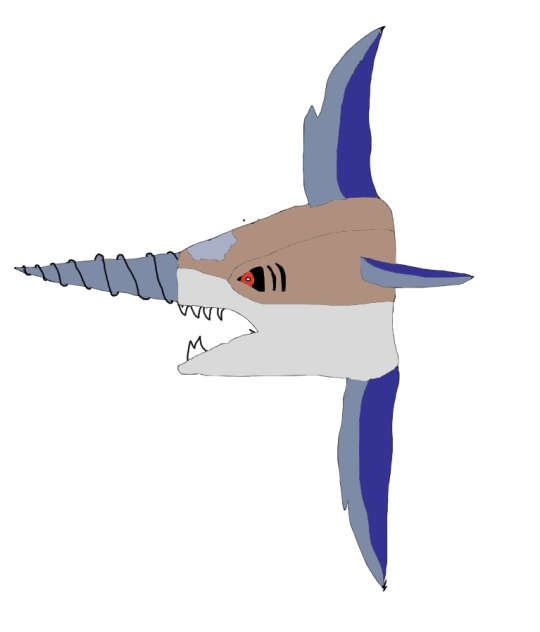
There's nothing deep in the inspiration for these two. It's just "what if piranha/shark, but on land?" The idea of sand sharks is certainly not unique to me. The idea of a piece of land having once been covered by a shallow sea came from the fact that a large portion of North America, much of which is now desert, was once covered by a shallow sea called the western interior seaway.
#pokemon#fakemon#australia#seaweed#australian mythology#australian folklore#muldjewangk#yawkyawk#snake#taipan#hoop snake#ouroboros#piranha#shark#tangela#ekans#carvanha#sharpedo#fish#regional variant#regional form#art#new artist#amateur art#drawing#artists on tumblr
6 notes
·
View notes
Photo
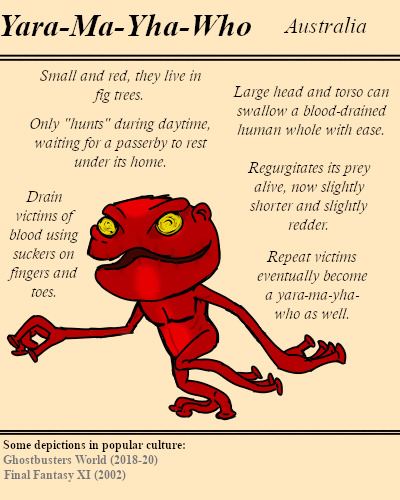
A strange diurnal creature, draining blood before swallowing its prey whole. It at least releases you alive, but try not to get caught more than once.
#BriefBestiary#bestiary#fantasy#mythical creatures#mythology#folklore#bloodthirsty#legend#australia#vampiric#australian aboriginal folklore#fig tree#monster#myth#aboriginal mythology#yara-ma-yha-who#yaramayhawho#aboriginal folklore#digital art#australian mythology#australian folklore#australian legend
28 notes
·
View notes
Text


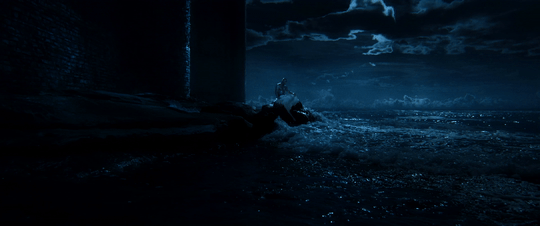
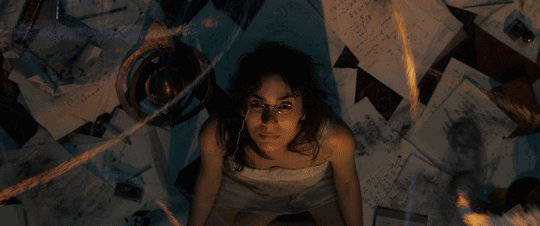
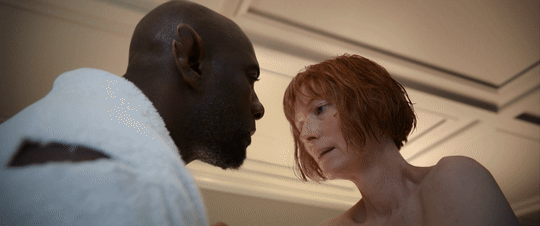
Three Thousands Years of Longing (2022)
-----------------------------------------------
dir. George Miller
cin. John Seale
cs. USA, Australia
#three thousand years of longing#george miller#tilda swinton#idris elba#2022 movies#djinn#arabic mythology#Burcu Gölgedar#Ece Yüksel#Aamito Lagum#american cinema#australian cinema#fantasy movies#2022
7 notes
·
View notes
Text

Day 1 of My First Challenge, Inktober. Here we have is the Australian Creature, a Bunyip.
A Swap Monster that is said to inhabited swamp areas such and would literally kill Humans if anyone were to went near in the Water. The Bunyip's design changes over the years since no one really knows for sure what kind of Beast these creatures are supposed to be. Some depict them as Seal-like (I suppose, Walrus-like, I assume?), a Canine-like beast, or other drawings show them being reptilian like a Crocodile or an Alligator.
The Word, "Bunyip" comes from the Aboriginal word, "Banib" which means "Devil". Although with that in mind behind that name, Aborigines believe that there are spirits in a realm called the "Dreamtime" that might've created the world and they also believe that Bunyips were mainly sent by spirits to punish People who do sinful things.
Bunyip (c) Aboriginal Mythology
#inktober#inktober 2023#inktober challenge#bunyip#aboriginal mythology#australian#australia#australia folklore#aboriginal myths
13 notes
·
View notes
Photo
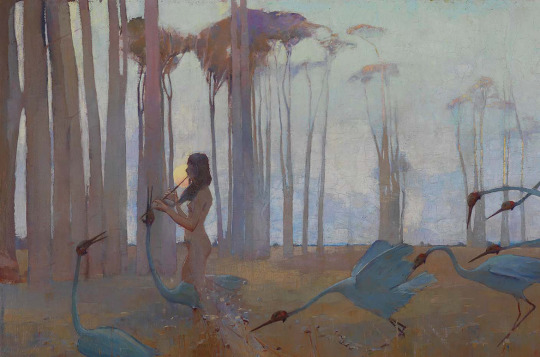
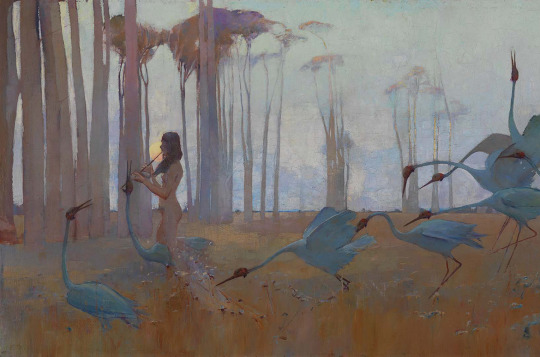

Sydney Long
Spirit of the Plains. 1897 (Queensland Art Gallery - Gallery of Modern Art, Australia)
#sydney long#painting#art nouveau#mythology#fantasy art#australian landscapes#queensland art gallery#australian artist#art details
155 notes
·
View notes